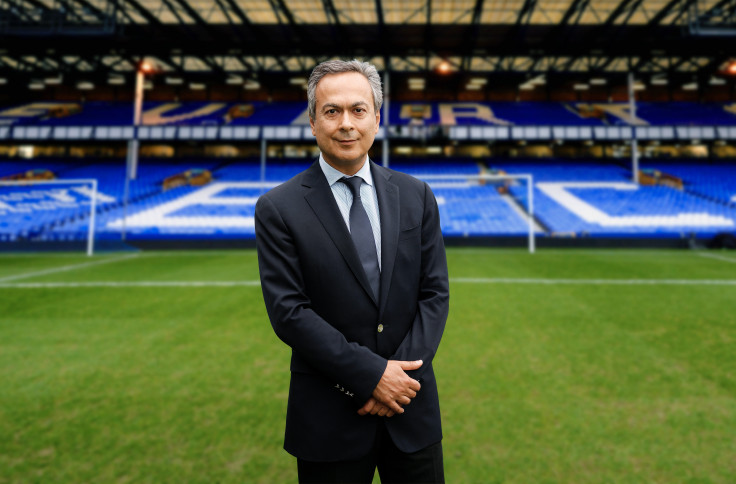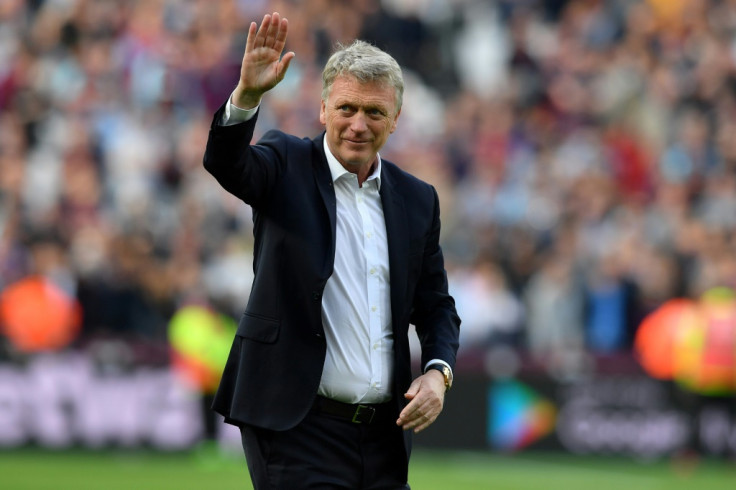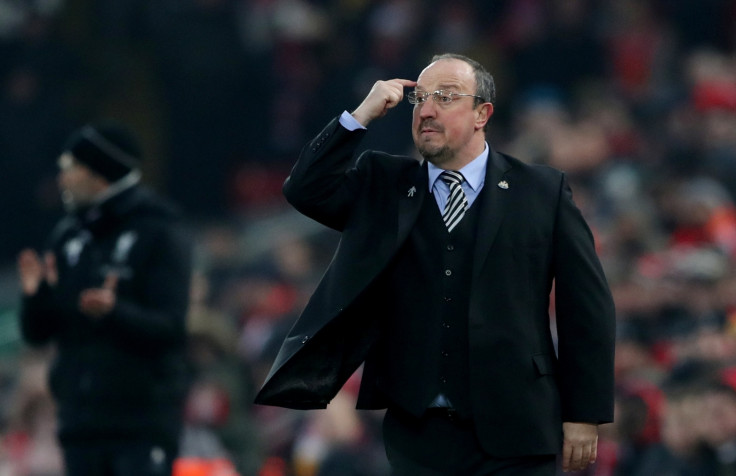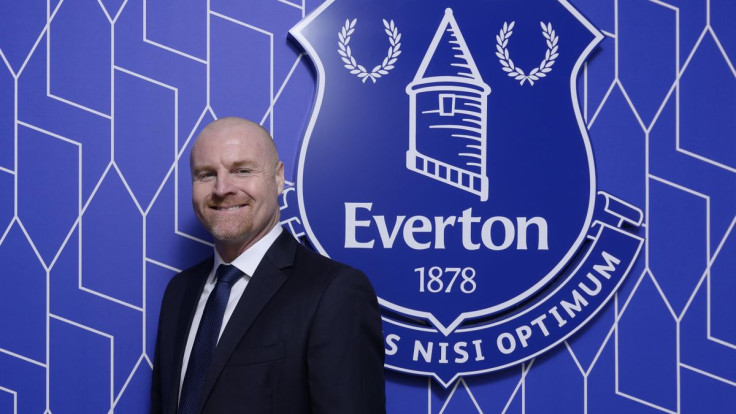The dire situation at Everton FC under Farhad Moshiri's ownership regime
Everton have spent over £700 million under Farhad, and are now facing financial and managerial missteps that have contributed to their decline.

Everton Football Club, renowned for their constant contribution to English football and the Premier League, face one of the most challenging periods in their history. Under the ownership of British-Iranian businessman Farhad Moshiri, the state of the club has worsened through a catalogue of poor decisions being made.
A current relegation fight under newly appointed manager Sean Dyche is what they are now facing due to incompetent planning in recent years.
Everton's incompetent functioning as a club has largely revolved around the high levels of spending they are guilty of. They are certainly a major contributor to the Premier League's recent rise in high spending figures.
In total, they have spent over £700 million under Moshiri. Astonishingly, the highest Premier League finish this has produced in the six full seasons since Moshiri was there, is seventh.
💰 Everton's spending compared to the "big six" since Moshiri's takeover
— Football Daily (@footballdaily) January 23, 2023
◼️ Chelsea - £1.397bn
◼️ Man United - 1.069bn
◼️ Man City - £1.048bn
◼️ Arsenal - £737.2m
◼️ Liverpool - £735.6m
◼️ 𝐄𝐯𝐞𝐫𝐭𝐨𝐧 - £𝟕𝟏𝟔.𝟔𝐦
◼️ Tottenham - £633.6m pic.twitter.com/NQvPRun4vr
Moshiri took over at Goodison Park in 2016 as majority owner and spending began that summer. According to Transfermarkt, £77.3 million was spent in Moshiri's first season in charge.
In retrospect, this first window was not hugely damning. Everton did make a couple of well-valued purchases in Dominic Calvert-Lewin and Idrissa Gueye for just £1.6 million and £7.6 million respectively.
However, £26 million and £20.7 million were spent on Yannick Bolasie and Morgan Schneiderlin respectively. Bolasie may have delivered good performances initially after signing but injuries derailed him and Schneiderlin was not a success either.
The following season is when the spending truly began getting questioned as a massive £182.6 million was spent. Again, like the previous year, there were good additions, such as Jordan Pickford for £25.6 million.
However, £44.4 million was spent on Gylfi Sigurdsson, whilst more than £20 million was spent each on players including Michael Keane, Davy Klassen, Theo Walcott and Cenk Tosun.
The spending figures were not the only questionable aspect here with the recruitment model making little sense as Sigurdsson, Klassen and other new signings Wayne Rooney, who joined for free, all operated in a similar playing position. Rooney and Klassen both only lasted a season and began to expose this scattergun-like approach from Everton in the transfer market.

Richarlison joining from Watford for £35.2 million in 2018 is widely regarded as one of Everton's better purchases. The club made a profit on him as they went on to sell him last summer to Tottenham Hotspur for a deal worth £60 million.
The Merseyside club also purchased Lucas Digne for £18.1 million in 2018 and also made a profit on him as joined Aston Villa for £25 million. Everton have made some good signings but due to there not being nearly enough of them and money being carelessly spent, they have had to sell a performing player as it may present the best chance to make any sort of substantial sale.
Other signings including Moise Kean did not work out at all. The Italian striker joined Everton from Juventus for £24.7 million in 2019 - but scored only two goals in his first season. Loan moves to Paris Saint Germain and back to Juventus followed.

Also, in 2019, Alex Iwobi joined Everton FC from Arsenal for £27.3 million. Whilst he has performed marginally better as of late, he has not reached anywhere near the potential expected of him when he first broke through.
Another signing made that has failed is Jean-Phillippe Gbamin, who joined for £22.5 million. He made just six Premier League appearances in three seasons due to constant injury setbacks and is now on loan at CSKA Moscow. Brazilian midfielder Allan also struggled to perform after joining from Napoli for £21.2 million in 2020.
Eventually, this obscene level of spending caught up to Everton as worries about exploiting Financial Fair Play (FFP) surfaced. FFP's main priority is stopping clubs from spending more than what they are earning in revenue.
The 2021 summer transfer window was the first sign of this as there were no longer any expensive signings being made. Demarai Gray was signed for just £1.8 million from Bayer Leverkusen, whilst Andros Townsend and Salomon Rondon joined for free. Dele Alli also joined for free in January 2022 and the club had to rely on loan moves with Donny van de Beek and Anwar El Ghazi coming in on loan.
Other than Gray, who has frequently performed well, these low-cost signings have turned out to be unsuccessful just like the majority of the expensive signings from previous years. Rondon did not impress as the striker scored only one Premier League goal before having his contract terminated.
Alli was just as ineffective as he failed to get a goal or assist in 13 matches and was subsequently loaned out to Besiktas. El Ghazi and Van de Beek returned to their parent clubs Aston Villa and Manchester United respectively, having made just nine appearances between them.
In addition to the poor recruitment strategy at Everton, the merry-go-round of managers has not helped either. Since David Moyes departed in 2013 to succeed Sir Alex Ferguson at Manchester United, there have been eight permanent managerial appointments.
Roberto Martinez succeeded Moyes and his impressive first season saw Everton finish fifth, the club's joint-second-best finish in the Premier League era. However, that was as good as it got under Martinez as back-to-back 11th-place finishes followed before he was dismissed.
None of the following managers managed to complete anywhere near the three full seasons Martinez did. Ronald Koeman, Carlo Ancelotti and Marco Silva were in charge for roughly a season and a half. Sam Allardyce and Rafael Benitez lasted just seven and six months respectively, whilst Frank Lampard remained in charge for 12 months before being replaced by Dyche.

The puzzling aspect of this managerial mess is that the managerial styles Everton's recent managers possess, are very different amongst them. Martinez is known for his possession-based style of football whilst Koeman and Silva also favour a forward-thinking attacking philosophy.
Other managers including Benitez and Allardyce are the polar opposite of that as they prefer a defensive structure, making them more pragmatic managers. If different styles of managers are being appointed, different types of players are being recruited. Then if a manager gets sacked, it leaves players that he signed in jeopardy. The next manager then must utilise a player that likely does not fit his style and with Everton, this has been a recurring theme.

They ended up with squads that were a combination of different types of players not all fitting into one style. When this occurs, it is evident that there is no clear structure or long-term plan set out in looking to develop the team.
The biggest name in the dugout recently at Goodison Park, Ancelotti, was the pivotal factor in convincing Columbian superstar James Rodriguez to join Everton in 2020. The pair had worked together previously at Real Madrid and Bayern Munich.
Rodriguez became the highest-paid player in the club's history as he was allegedly earning £250,000 a week. Everton having a manager and star player of this quality was a sign of optimism.
However, once Ancelotti left Everton to return to Real Madrid in June 2021, it left Rodriguez in a tough situation. Matters were worsening despite a bright start to his Everton career as his form dipped and he came in for criticism.
Eventually, he was surplus to requirements as Ancelotti's replacement, Benitez, did not favour him. The club's financial issues, coupled with him not being favoured, led to the club wanting to sell him so they could ease their wage bill.
This transfer is a case of Everton's issues such as their finances and managerial changes being a detriment to continuity within the football team.
Everton really had Carlo Ancelotti and James Rodriguez at the club 18 months ago 😳 pic.twitter.com/ojcWyc34Gb
— ESPN UK (@ESPNUK) January 23, 2023
Prior to Moyes departing, there was stability at Everton, as the Scotsman's 11-year tenure at Goodison Park saw nine top-eight finishes. This included finishing fourth in the 2004/05 season and back-to-back fifth-place finishes in 2007//08 and 2008/09.
Under Moyes, Everton always remained competitive and Goodison Park was an intimidating place to visit. Evidently, Moyes did a phenomenal job in his years on Merseyside as the consistency he brought out of the team has not been even closely replicated by any of the managers since.
Managers tend to spend much shorter periods at clubs nowadays so expecting a manager to stay for 11 years is wishful thinking. However, stability should still be desired by Everton as not having a plan for what sort of team they want to build has derailed them massively.

Dyche will be hoping he can finally bring continuity back to Everton. He previously managed Burnley where he spent 10 years and promoted the club to the Premier League twice. He also oversaw six successive seasons of Premier League football at Turf Moor which included a remarkable seventh-place finish in 2017/18.
Dyche managed to start his Everton tenure with an impressive 1-0 victory over league leaders Arsenal. He will need his Everton side to replicate that sort of quality if they are to remain a Premier League club.
The club did not have a great January window as one of their most talented assets, Antony Gordon, left the club in a distasteful manner by forcing a move to Newcastle United. Everton did get a reasonable deal as they received £45 million. However, Chelsea were prepared to pay £60 million for Gordon's services last summer.
Also, this past January saw the club have a loan deal for Villarreal's Arnaut Danjuma hijacked by Tottenham Hotspur at the last second.
Everton FC were also keen on Chelsea midfielder Conor Gallagher with both clubs open to a deal. However, Gallagher reportedly was not willing to move to Goodison Park. The club failed to bring in any new signings in the winter window and as a result, no new tools are at Dyches's disposal as he looks to get Everton back on track.
With regard to the club's stadium plans, they are set to move on from Goodison Park. They are well into the process of building their new stadium and it is set to open up in time for the 2024/25 season.
The cost of the new 52,000-seater stadium is estimated to be around £500 million. This makes staying in the Premier League imperative as the financial losses that clubs suffer when they are relegated to the Championship can derail them massively. This level of investment into the club has got to start yielding better results and performances in return or financial issues will become a major headache to Everton.
The large sums of money spent on transfers and the new stadium have caused Moshiri to open the club up to potential new investors. Speculations claim Moshiri may even consider a full sale if an offer of £500 million is received.
However, he insists the club is not for sale, so this does cause confusion amongst Everton's fanbase and other areas of the club as there are doubts over their club's direction.
Everton FC are currently facing tough times on and off the pitch and these issues will need to be addressed as soon as possible if the club has the aim to become a more stable force in English football. A lack of direction and vision from the higher-ups has contributed to one of the Premier League's longest-standing clubs being in a critical situation.
© Copyright IBTimes 2025. All rights reserved.






















